This Friday, the first ten episodes of The Dark Crystal: The Age of Resistance will stream on Netflix. It’s the conclusion (or at least the next step) in a long-time dream by the late Jim Henson and the Henson Company to bring The Dark Crystal back to the screen using the same puppetry used in the 1982 fantasy-adventure film. For three and a half decades, the characters have appeared in other media, including novels, comic books and games, but a long-planned sequel just never got out of development.
Cut forward to the ‘00s and the Jim Henson Company under the aegis of Jane Henson, Jim’s eldest daughter, has put together a new team to tackle the prequel, led by director Louis Letterier (Clash of the Titans) with developing writers Jeff Addiss and Will Matthews and writer/producer Javier Grillo-Marxuach. Together with the creature design and puppet teams at Henson Company, they’ve put together a series of ten one-hour episodes that will tell the story of Thra under the Skeksis many years before the events depicted in the movie.
It features an A-list voice cast, including Taron Egerton (Kingsman), Helena Bonham-Carter, Anya Taylor-Joy (Glass), Alicia Vikander, Sigourney Weaver, Natalie Dormer, Lena Headey, Jason Isaacs, Theo James, Mark Strong, Toby Jones, Gugu Mbatha-Raw, Simon Pegg, and many more. It’s a very big cast of characters indeed but all the actors are working over the initial work done by the puppeteers.
That’s just one of the things The Beat learned when we got on the phone with the three primary writers tasked with developing the prequel as we spoke about all aspects of making The Age of Resistance.
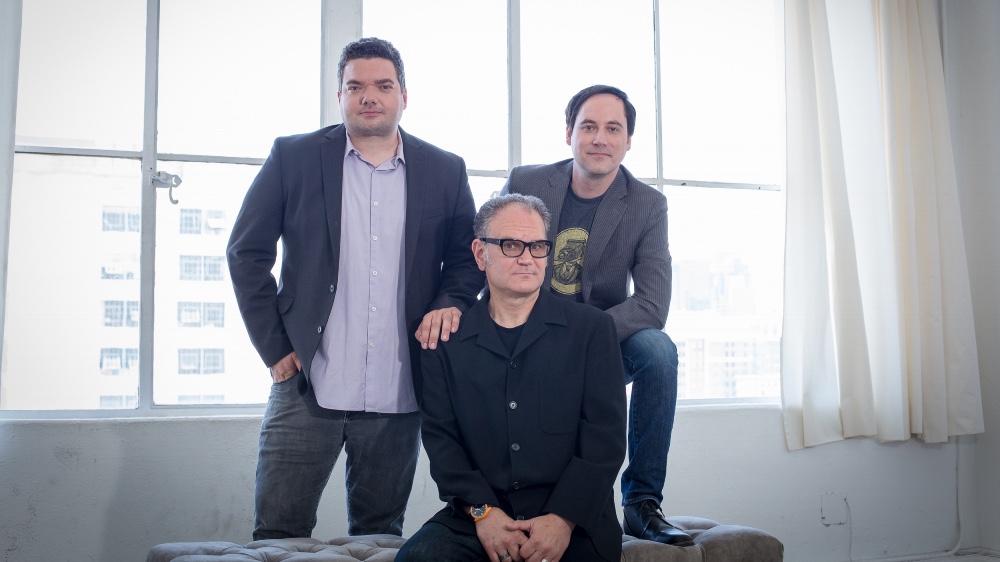
THE BEAT: First of all, how long have you been involved with this? I understand you wrote a script and that’s what helped get this process started? How long ago was that?
Jeffrey Addiss: Will and I came in about three and a half years ago. We had called them about another project, and they said, “We’re doing the Dark Crystal. Would you be interested in pitching?” and we said, “Yes, please, yes please, yes, please.” We came in and pitched our little hearts out, pitched Netflix, got them on board, and then we wrote a script. We shot a test and off of that, we got a greenlight. At that point, Javi came in because we had never run a writers’ room, much less been in one, and we formed the three-headed Hydra, and we broke this show. Louis [Letterier] was in the room. Lisa [Henson] was a big part of it. Holly Stamford, the Jim Henson Company, it was an incredibly collaborative process. There was a lot of pieces that were already there. The Y.A. novels that Joe Lee [aka author J.M. Lee] wrote, who was also in the room. There were earlier versions of the show that were animated, some of those pieces ended up – The Book of Albra.Everything got pulled in – it was a big pile – and we had to root through the pile and find our path.
THE BEAT: You mentioned that the Jim Henson Company was involved, and obviously, you wouldn’t be able to do this without them…
Javier Grillo-Marxuach: Wait, wait… The Jim Henson Company wasn’t “involved,” they originated the project. It is their project. Lisa Henson is our boss. The word Henson is on the building we worked at. Lisa, specifically, and I’m not trying to be pompous. I apologize if it came off that way, but I just want to make sure that the relationship is very clear. Lisa Henson, who is the executive producer of this and runs the studio and her father’s company, is keenly aware of the truth that this project and the original film was her father’s favorite thing that he ever did, the one he worked hardest on and the one he was most proud of. You’re literally looking at a dynastic longitudinal effort by the Jim Henson Company to create the best possible expression of this in tribute to what Jim Henson did. We were literally working on Lisa Henson’s lot.
Addiss: We never wrote on spec or anything. We came in and had a meeting and said, “We want to do a prequel series” and they gave us a lot of information and talked about the world-building that they’d done, and then we went off and came up with a story. The heart of this was always being kept alive by the Jim Henson Company.
Grillo-Marxuach: You have to understand that the Jim Henson Company kept this project alive for many years. They were developing sequels, and they also put out about The Dark Crystal. They’ve had comic books, they’ve had the “Creation Myths” books so this is a garden that has existed for a long time. We looked at our job as being the caretakers of it for this stretch of the existence of Thra, but it really is about being part of something greater than yourself, and the Jim Henson Company in the form of Lisa specifically kept this flame going and wanted everything to be in canon and wanted everything to be part of a greater whole.
THE BEAT: When you’re writing this, how do you know that the Henson Puppeteers can pull off some of the things you have them doing? There are some fairly elaborate action scenes, so is there a lot of faith that you know they can figure out how to do it?
Addiss: One thing is that [director] Louis Letterier was in the writers’ room most of the time, so intrinsic in all the conversations we’re having is how is Louis going to shoot it? The answer is that sometimes he didn’t know yet, but he’d figure out an answer, and he did. We pushed the limits, but you have a really good team. The Henson Company knows puppets well. The creature shop is amazing. Brian Froud is providing artwork and input, so we took it to some places that I think surprised even ourselves, but you trust in the team around you. I don’t think anybody ever told us, “This is something that you can’t do or can’t be done.” It always was a question of what’s the best way to do it and is this the best way to use our time?
Will Matthews: One of the exciting things about working on this is that nothing like it had ever been done, even compared to the original movie. This is so much bigger and more complicated, more characters, more puppets, more puppeteers, more time, just more. You’re working with the best in the world at what they do, and everyone is figuring out what really is possible as they do it. Going in, there aren’t really a lot of limitations – there can’t be – no one knows what the limitations are, because no one has done it before. There are a lot of discussions about how much will it cost, how much time will it take, but there aren’t a lot of discussions that are just like, “No.” Their questions are, “How?” and you’ve got a bunch of geniuses working on solutions.
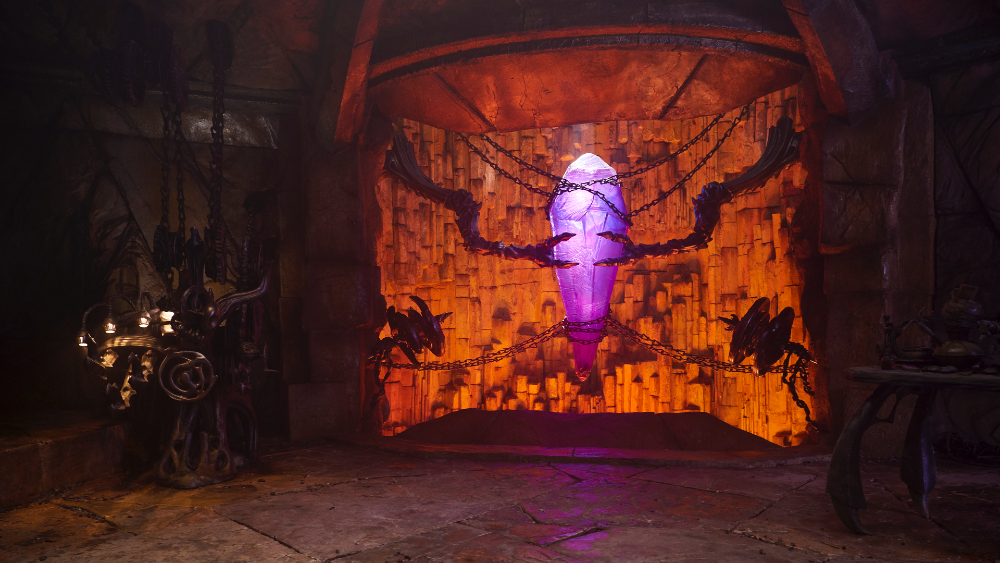
Grillo-Marxuach: Working for the Jim Henson Company and working with the Jim Henson Company is a team sport and apropos of how I explain that, there was already a bit eco-system in place when we came in. We were lucky in that we had so many branches of this company involved in this and adding their input to it. For example, more than one of the puppeteers worked on the original. We had master puppet-builders who worked on the original, working in the creature shop. We had the same in the wardrobe department. Obviously, Brian Froud designed this with his wife and his son Toby was one of the lead creature designers on this thing. You’re really talking about the brain trust of people. One of the things that you have to do when you come work at The Dark Crystal is you have to surrender your ego a little bit, because you know that there’s a lot of great people who are going to help you solve these problems. That actually frees you to be more inventive, because you know that there are great people who are masters of their craft who have your back.
THE BEAT: You mentioned the comics earlier, so is there one person who oversees everything and make sure that it all comes together? I know there’s a new comic that will be a prequel to the Netflix prequel, so is that Lisa overseeing everything or are you guys involved with the comics as well?
Addiss: Lisa is a lot of it. Will and I, we actually broke the stories on those prequel comic books that are coming out, the new ones, because we want them to all be part of the same world, and then those get turned over to amazing writers and artists who bring a lot to it. We did want to make sure that all that prequel information was talking to each other. A lot of it is in Joe Lee’s brain, a lot of it is in our brain. It’s a big world, so it kind of takes a few brains of storage to keep it all.
THE BEAT: I’ve only seen the first five episodes, and I’m obviously trying to avoid spoilers but in the first episode, you have a bit of a “Ned Stark moment” because you create a character people are going to love right away and then he or she dies…. Very violently, I should add. Can you talk about the fact that in the Dark Crystal movie, there’s only two Gelflings left, so to get to that point, you’re going to create all these popular characters, and they’re eventually going to die so…
Grillo-Marxuach: We don’t want to get into the plot specifics, especially some of the darker stuff, because we want to surprise the audience, and we want to keep those things [secret] even if this publishes after it drops. It’s very easy to look at the film and believe that you know exactly what happened already and how it all played out. I assure you, we have an answer for how Thra got to the state it’s in in the movie, and it may not be what you think it is, based on having seen the film. Thra is a big place, and as Jeff so aptly puts it, there’s a lot of space for hope there. One of our bigger challenges was figuring out how to do that, and I’m proud to say that Will and Jeff really have a great answer for that, and it may be something you don’t expect.
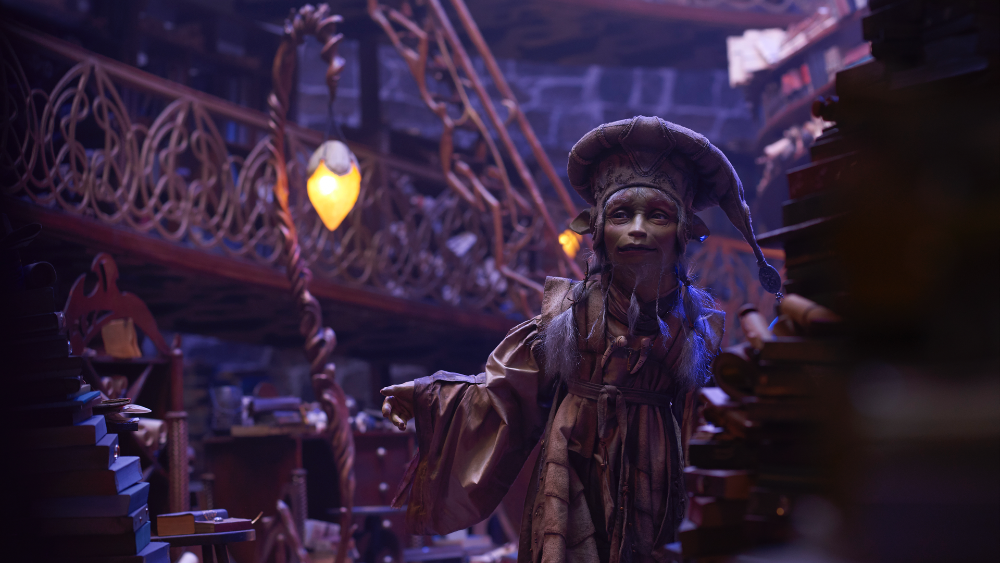
THE BEAT: That’s good to hear. I think my editor was upset that you created so much hope in the first half of the series, but we all assume that all the Gelflings will eventually die. I guess that’s one of the things you have to deal with while making any prequel, because the end point is what you’re making a prequel to.
Grillo-Marxuach: Let me put it this way. You don’t know how it turns out. You just know what it looks like after. You even said it: “We assume.” And we like to play with the audience’s assumptions.
Addiss: In terms of killing characters or the death of characters, it is a show that talks about death. It is a show where that is part of life in Thra and the circle of life. We did not shy away from it. We tried to make sure that it was earned, and that it had a reason to be there. We never took a dark choice just to make a dark choice. It always came from story and where it’s all going.
Grillo-Marxuach: When you look at the original and look at Jim Henson’s general philosophy, he didn’t shy away from the darkness, but it was always in the service of a greater message. We never want death or mayhem to be gratuitous in this show. We don’t look at this show as being about winning wars or about carnage. This show is a defense of the moral high ground, and in order to have a moral high ground, you need to have something that you’re pushing against, and that’s a huge part of the show. We were never afraid of doing dark, but we never wanted it to be because people assume that The Dark Crystal is dark. That much said, we had a saying in the writer’s room and that saying was, “It ain’t the Happy Crystal.”
THE BEAT: I don’t have kids myself, but as I watched it, I wondered what age kids would be appropriate to watch this. I was in my older teens when The Dark Crystal came out, so I was probably older than the target age. As far as the series, is there any sort of consideration about that and how dark/violent you can get and how scary you can make things?
Addiss: There was always discussions. It was always something that we were mindful of before we did it, but if we felt that it was necessary for the story, we were always surprised by how much Netflix and the Henson Company would say, “Yes.” I think we were waiting to get reined back, and we rarely if ever did, but we were also very conscious of the responsibility that we had in something that is aimed at family audiences. We hope that parents who have younger children will read this interview and/or listen to us talk and be mindful of that before they show it to small children.
Matthews: We think of it as 10 and up. The target audience is sort of like Stranger Things.
Grillo-Marxuach: There are certainly younger people that watch Stranger Things. I don’t think we’re quite as gory or dark as that, but it has elements of that within it. We do think of it sort of like in the Star Wars universe, that sort of darkness.
THE BEAT: One of the interesting things you do is you have separate voice actors and puppeteers. I was curious whether at any point, the characters were just brought to life by puppeteers. Was all the puppeteering done and then voiced over? How was that done if you were around?
Addiss: I was there for all of shooting and all of post and the recording; we were all sort of in and out, but I was there for a lot of it, so I can tell you that in detail. We shot it with the puppeteers doing the voices on set. We would record that, and then we would shoot and edit that and then take that into the recording studio, and the voice actors would come in. They would have to match the cadence and the tempo of what the puppeteer did, which is very tricky. It’s not like traditional animation where you record it beforehand. They had to learn this process, and they picked it up very quickly ‘cause these are phenomenally-talented performers, but it’s a dance.
We recorded 10,000 individual lines over the course of months. There was an amazing sound team that then had to go in and make all of this fit and cut it together. It also gave us opportunities to create things, right? Because it’s mouth flaps basically, so we could create new lines and new scenes, and you would never even realize it because of the articulation. We had a lot of room in editing, and when we were putting together the final version, to find and create moments and really make sure we were shoring up the story in exactly the right way. There’s some fun moments that I don’t want to give away, but I can tell you that they were created and added later by looking at the scene and saying, “Boy, we could use a joke here or we can use a little lightness here or a moment between them.” We could create that all the way through.
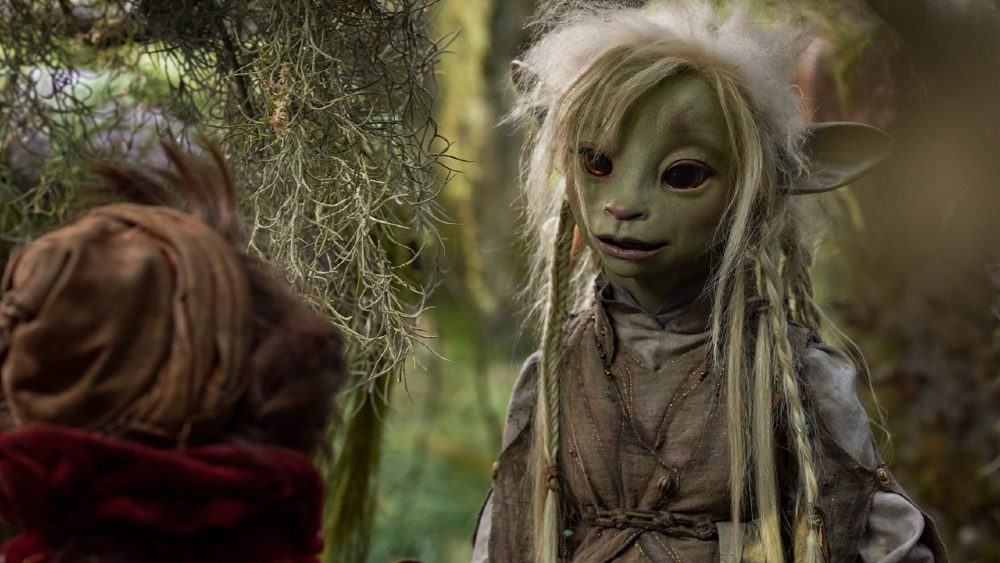
THE BEAT: It definitely turned out great, and I really like the characters. I have a special love/hate thing going on with Deet.
Addiss: You hate Deet?! Oh, no, she’s a sweetheart!
Grillo-Marxuach: I’ve never heard that before, but I love it.
THE BEAT: The first time you see her, she’s coddling this fuzzy creature and it’s adorable but in a corny way, but then she gets terrorized and that makes me laugh. I’m now kind of obsessed with what she will do in the next episode. So don’t kill Deet!
Addiss: I won’t, I won’t, don’t worry.
Grillo-Marxuach: Apropos of your comments about the puppets and the voice-over actors, the performances in the show are composite performances, and they start with the sculpting of the character. Since we’re not casting people, the sculptors, the people who design and then execute the characters, have some burden of storytelling. The esthetics of each character tells the story – their costumes, their hair – and then you have the puppeteers bringing their physicality, their humanity to it.
And then on top of that, you’ve got this amazing voice-over cast adding the voices that you’re finally going to hear, matching the puppeteers’ movements, especially the mouth movements. The performances are very much intertwined. None of the acting in the show happened in a vacuum. One of the great pieces of magic there is that you’re seeing the best work of a number of talented people going into every character. The acting, in terms of the puppeteers, the designers and the voice-over actors is about every piece of the craft augmenting the next, and it’s kind of magical to watch.
THE BEAT: Did any of the puppeteers’ voices end up on the show because they were too good to replace?
Matthews: Yes, that did happen a couple times. Neil [Sterenberg], voicing the Scrollkeeper, was not planned, but he was just so good at it, you just couldn’t imagine anybody else doing it, so he got to keep that voice. Alice [Dinnean] doing the Ornamentalist was definitely not the plan, so she was like, “Well, I’m not going to get this voice anyway, so I might as well get weird with it.” She swung for the fences and that voice was so great, we had to keep that. And then there’s some smaller parts like Louise Gold keeping Maudra Argot.
Addiss: Every one of the lead puppeteers has a voice somewhere in the show. Every creature’s sound is based on voice work, usually and often by the puppeteers. If you a character or a creature, there’s usually the voice of a puppeteer or an actor underneath it. We wanted everything to have a human base.
Matthews: Of course, Victor [Yerrip] is puppeteering and also voicing Hup.
Addiss: Yes, so everybody is there somewhere.
THE BEAT: Obviously, this is done and coming out on Friday. The years are finally coming to fruition, so when do you sit down and say, “Okay, we gotta do a follow-up, because people love this and we need to do more.” Have you already outlined another season or anything like that?
Addiss: Yes, we have a story for the next season, and now, everybody has read that and now, it’s about waiting and seeing what the numbers are and who watches it. We are ready to go. We are ready to return to Thra. We just want to make sure that people want us to return to Thra. [This makes them all laugh.]
Matthews: If you watch it, we will write it! [More laughter.]
The Dark Crystal: The Age of Resistance will stream on Netflix, starting Friday, August 30, and you can read Samantha Puc’s review right here.


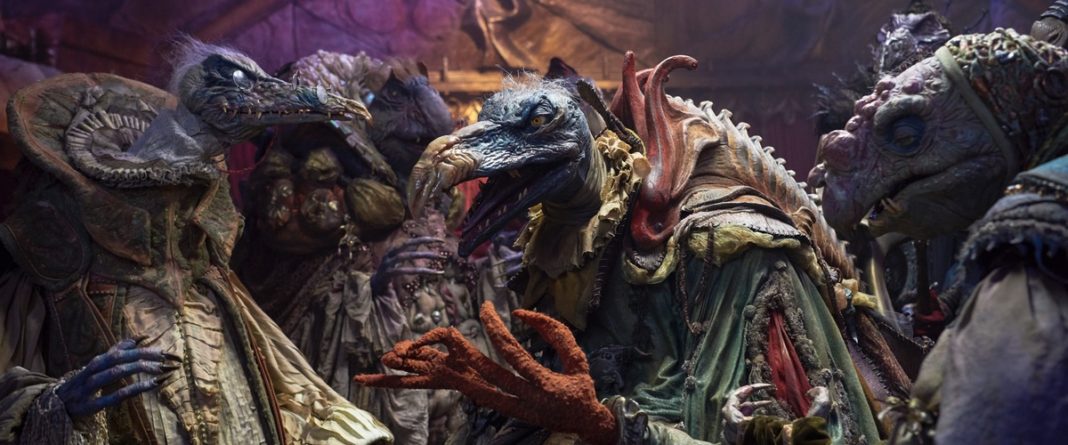


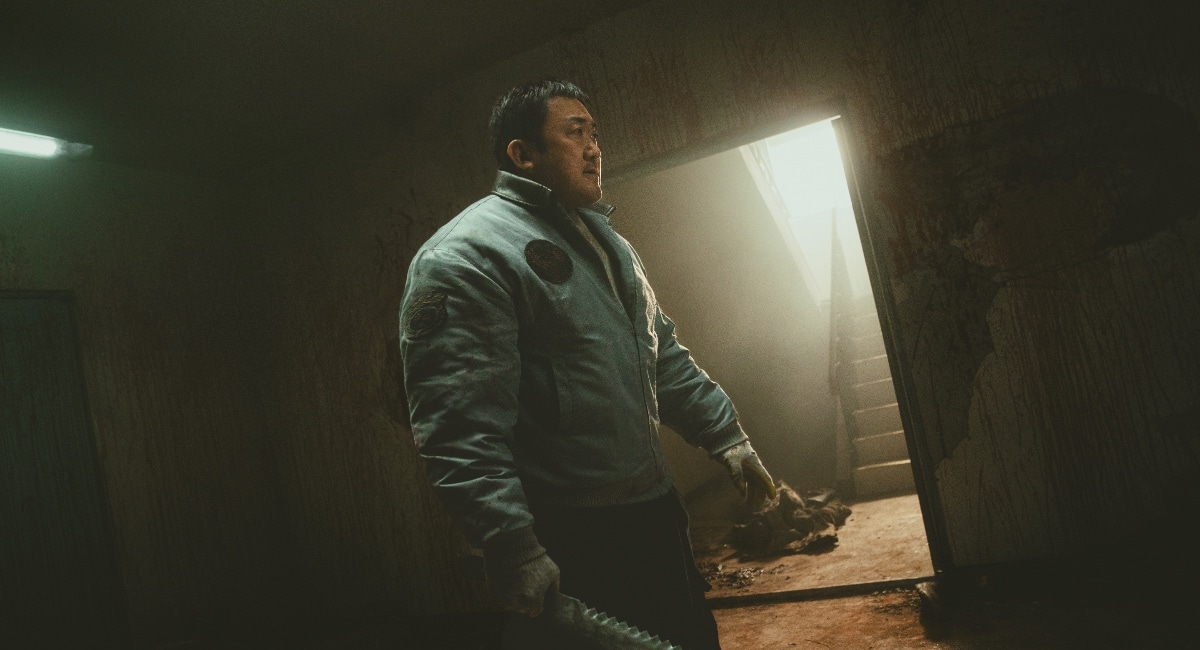



Tell me, what’s the outcome at the end of the series? Oh yeah, the Light wins…. (that was unexpected – Not!)
aka. knowing how to read a text, and the conventions it operates under
Since I’ve only watched the first five episodes, I couldn’t tell you. Sorry!
Comments are closed.